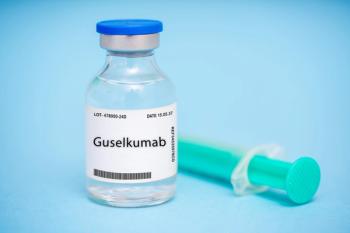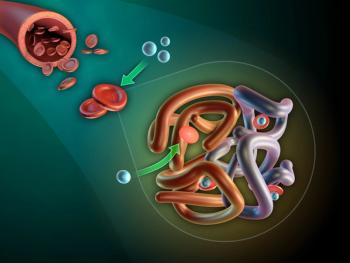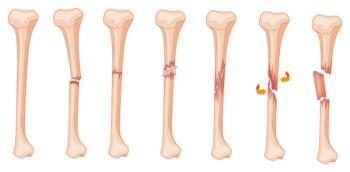
Inflammation
Latest News
Latest Videos

CME Content
More News

Long-term extension analysis of the phase 3b APEX study (NCT04882098) through 3 years of treatment will further assess the sustained efficacy of guselkumab (Tremfya; Johnson & Johnson) in limiting structural damage in patients with active psoriatic arthritis (PsA).

The systemic immune response index outperformed other inflammatory markers in predicting chronic obstructive pulmonary disease (COPD).

Regulating hemoglobin levels could help reduce inflammation and improve rheumatoid arthritis management.

A dietary fiber intake between 14.4 and 26.7 g reduced the risk of osteoarthritis, but an intake above this dose was not significantly protective.

Rebecca Haberman, MD, of NYU Langone Health, highlights precision medicine and potential prevention strategies, two areas of promising psoriatic arthritis research.

An extensive library of physical activity resources will better support the different needs, capabilities, and considerations of patients with rheumatoid arthritis (RA), according to the researchers.

Although her recent study acknowledges potential differences between White and non-White patients with psoriatic arthritis (PsA), Rebecca Haberman, MD, NYU Langone Health, emphasizes the need for further research to understand what these differences are and why they occur.

A positive association was found between osteoarthritis and overactive bladder (OAB), but rheumatoid arthritis and psoriatic arthritis were not significantly correlated with the condition.

A higher Dietary Inflammatory Index score was linked to an increased risk of hypertension in children and adolescents, emphasizing the role of diet in blood pressure regulation.

Hispanic and non-White patients with psoriatic arthritis (PsA) had higher tender joint counts and greater disease severity, highlighting racial and ethnic disparities in PsA disease burden and treatment outcomes.

A genetic causal link between rheumatoid arthritis (RA) and an increased risk of traumatic and osteoporotic fractures underscores the need for targeted prevention strategies.

No significant association was found between osteoarthritis and cognitive decline, but depression may influence mental outcomes, particularly in those with vascular dementia.

While higher patient-reported Psoriatic Arthritis (PsA) Impact of Disease questionnaire (PsAID-12) scores were associated with treatment escalation, physicians primarily relied on clinical assessments when making treatment decisions.

This systematic review of real-world observational studies demonstrated the effectiveness of Janus kinase (JAK) inhibitors in improving treatment adherence, persistence, clinical outcomes, and patient-reported outcomes among US patients with rheumatoid arthritis.

Early onset active inflammatory bowel disease (IBD) is associated with significantly higher rates of psychiatric disorders and increased use of psychotropic medications.

Nurse-led care effectively reduces disease activity and improves self-efficacy in patients with rheumatoid arthritis, delivering comparable outcomes to rheumatologist-led care and usual care while easing health care burdens.

Compared with female patients, male patients with eosinophilic esophagitis have higher rates of complications, including esophageal obstruction, food impaction, and rupture, highlighting potential gender differences in disease severity.

The expanded indication makes dupilumab the only approved treatment for eosinophilic esophagitis (EoE) in this age group.

A new study suggests vitamin D2 supplementation on patients with psoriasis is superior to vitamin D3 supplementation, but there was no significant difference in heterogeneity.

In a new study, patients with psoriasis had a 39.46% prevalence of being overweight and 37.41% prevalence of obesity—83.56% patients also dismissed the importance of having healthy balanced eating habits.

This study found no significant associations between weight changes and outcomes in hand osteoarthritis.

This year’s most-read articles on inflammation explored predictive biomarkers, medication acceptance, the impacts of long COVID-19, and more.

This data represented the first-ever research presented at ACR on both fractures and calcium pyrophosphate deposition disease.

A cross-sectional study revealed that neuroinflammation is linked to irritability, among other neuropsychiatric symptoms, in patients with Alzheimer disease (AD).

In a real-world, prospective study, upadacitinib demonstrated great potential for the treatment of rheumatoid arthritis (RA) regardless of a patient’s baseline C-reactive protein (CRP) levels.



















































